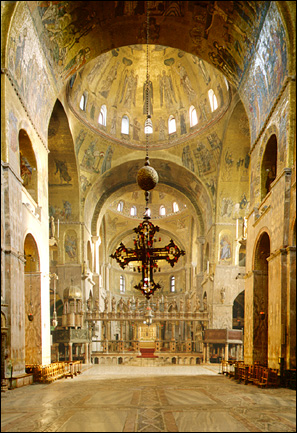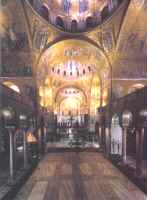
High
resolution interior image showing mosaics of the pavement and walls
along
with probable location of Sarsgent's painting. |
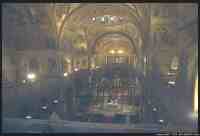
Interior
Photos |
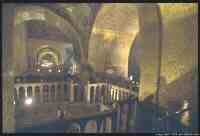
Interior
Photos |
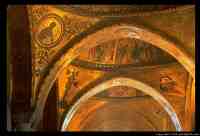
Interior
Photos |
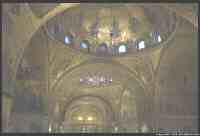
Interior
Photos |
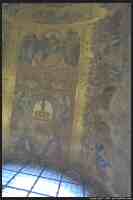
Interior
Photos |
|
 |
(page 2 of
2) |
|
|
Basilica San
Marco Interior
Everywhere there
are marble columns,
sculptures of sacred personages, and 4000 square meters of mosaics all
unified according to a complex iconographical plan.
Come every
day for the rest
of your life with a small portable helicopter and you might begin to
feel
that you have seen everything that this cave of wonders has to offer.
Failing
that, make more than one visit - preferably at different times of day,
to appreciate the varying effects of light on the mosaics. The
lambent
interior exudes splendour and mystery, even when bursting with
tourists.
It is in many ways an exercise in obsession: for six centuries the
Venetians
continued to add to its treasures, leaving not an inch uncovered.
. . . The
surfaces - all the
surfaces - are covered by more than 4,000 square metres of mosaics, the
result of six centuries of labour. The finest pieces, dating from the
twelfth
and thirteenth centuries, are the work of Venetian crafts-people
influenced
by Byzantine art but developing their own independent style. The
chapels
and Baptistry were decorated in the fourteenth and fifteenth centuries;
a century later, replacements of earlier mosaics were made using
cartoons
by such artists as Titian and Tintoretto. However, most of these later
mosaics are fundamentally flawed by the attempt to achieve the
three-dimensional
effects of Renaissance painting.
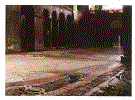
The
Pavement (San Marco)
John
Singer
Sargent
1898
Collection
of Mr. and Mrs. Steven J. Ross
Oil
on canvas
53.3
x 72.4 cm (21 x 28 1/2 in.)
. .
.Notice too the
magnificent marble, porphyry and glass mosaics of the floor. These date
from the twelfth century, though they have been much restored. In the
last
century the British architect GE Street managed to block a large-scale
programme of replacement by convincing the authorities that the
undulating
surface of the floor was a deliberate attempt to imitate the waves of
the
sea. He was too late to save the left aisle, which is noticeably
smoother.
(timeout.com)
<>
From: Daniel Craig
d c ra ig@usi.edu
Date: Wed, 1 Sep 2004
[Musically,]
the interior of San Marco is important for the fact that it is one of
the first examples where singers and instrumentalists were put in
lofts.
Giovanni Gabrielli developed a process of double, triple and quadruple
choirs singing antiphonally and responsively from these balconies at
the
onset of the baroque period.
I
LOVE your pics [by Philip
Greenspun] of
San Marco. I intend to
link to this site for my college music appreciation students to see the
interior.
Grace and Peace,
Daniel
Assistant Professor of Music
University of Southern Indiana
* * *
See other painters
works of the Interior:
Walter
Richard Sickert (1860-1942)
British
painter
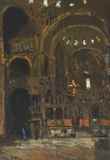
Interior
of St. Mark's, Venice
1896
Notes:
|
|
